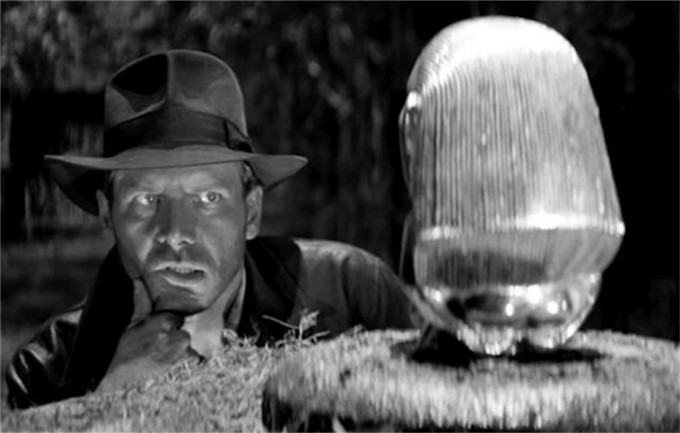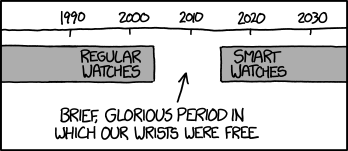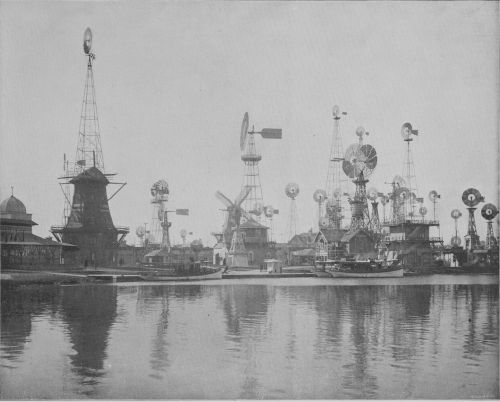
Petey
wskentmath hole.
wskentCOMMENTARY! similar to: http://ecooptimism.com/wp-content/uploads/2013/03/bike-bus-car.jpg
Para la celebración del Día Mundial Sin Autos que se realizó el pasado lunes 22 de septiembre, el subsecretario de Transportes, Cristián Bowen, anunció una modificación a la Ley de Tránsito para “dar mayor claridad, tanto a los usuarios de este modo de transporte (de la bicicleta) como al resto de los usuarios del espacio vial, respecto de los derechos y deberes de los ciclistas”.
Con motivo de la celebración de este día, en la capital de Letonia, Riga, un grupo de ciclistas realizó una intervención muy particular. Durante la hora punta -que termina a las 9 am- recorrieron las principales avenidas en bicicleta cargando una estructura que simula un automóvil. Esto lo hicieron para demostrar la gran cantidad de espacio que ocupa cada auto y, más específicamente, por el espacio que ocupa una sola persona, en comparación con un ciclista.
Esta intervención se suma a otras iniciativas que han logrado reflejar el espacio de nuestras calles que usan los automóviles. Entre estas, se pueden mencionar los estacionamientos para 10 bicicletas habilitados en el estacionamiento para un auto y el gif que muestra cuántos pasajeros pueden viajar en un tranvía y cómo se ven las calles si cada pasajero lo hace en un auto.
Revisa una galería de imágenes a continuación.
Fuente imágenes: Let’s Bike It (© delfi.lt)
wskentworth your two mintues if you haven't seen it yet.
This commercial for GE Link Light Bulbs starring Jeff Goldblum was directed by Tim Heidecker and Eric Wareheim, bizarro-discomfort comedy performers and directors best known for the Cartoon Network Adult Swim programs “Tim and Eric Awesome Show, Great Job!,” “Check it Out With Dr. Steve Brule,” and “Tom Goes to the Mayor.” Tim and Eric and Dr. Steve Brule are currently on a sold-out US tour.
Read the restwskent"Hup hup! Time for fallballsport!"
wskentNB: Tomatoes have many names that are other things. This is ridiculous and confusion. Plus Amish Paste.
wskentMaybe my love for this movie is too great, but seeing it all in black and white makes EVERY screenshot amazing.

Director Steven Soderbergh removed the dialogue and color from Raiders of the Lost Ark to fully showcase Spielberg's mastery of visual staging. Read the rest
wskentHOVER OVER IT. best commentary will be found there.

wskentI have no doubt these will come in handy sooner than later.
wskentSo you want to become a Chaos Engineer? What do you think would be on your resume? (besides random wingdings in no particular order or clear formatting style)

Netflix is hiring "Chaos Engineers" to launch assaults on its network and verify that Netflix's systems can recover from failure without degrading customer experience.
In a blog post last night titled "Introducing Chaos Engineering," Netflix "Chaos Commander" Bruce Wong wrote, "We are constantly testing our ability to survive 'once in a blue moon' failures. In a sign of our commitment to this very philosophy, we want to double down on chaos aka failure-injection. We strive to mirror the failure modes that are possible in our production environment and simulate these under controlled circumstances. Our engineers are expected to write services that can withstand failures and gracefully degrade whenever necessary. By continuing to run these simulations, we are able to evaluate and improve such vulnerabilities in our ecosystem."
Toward that end, Wong wrote that Netflix is "hiring additional Chaos Engineers." The jobs don't appear to be on Netflix's job site yet, but a short description was posted on Twitter by Netflix's Dan Woods last week:
Read 2 remaining paragraphs | Comments
wskentOh great! But is there anything they can do about this thing in Switzerland? http://blogs.kqed.org/pop/wp-content/blogs.dir/45/files/2013/12/tumblr_mb5kpkGBLu1qdj4i3o1_500.gif
A team from MIT has come up with an algorithm that could let cleanup crews match a target's movement so they can safely snatch it up.
The post Science Graphic of the Week: Using Cameras and Fancy Algorithms to Track Spinning Space Junk appeared first on WIRED.
wskentwikipedia is the indisputed king of lists. i could rattle off the reasons why, but you'd be better served just clicking through.
From Wikipedia, a list of common misconceptions, including a recent favorite about life expectancy in the Middle Ages:
It is true that life expectancy in the Middle Ages and earlier was low; however, one should not infer that people usually died around the age of 30. In fact, the low life expectancy is an average very strongly influenced by high infant mortality, and the life expectancy of people who lived to adulthood was much higher. A 21-year-old man in medieval England, for example, could by one estimate expect to live to the age of 64.
Also, Vikings didn't wear horned helmets, Romans didn't puke in vomitoriums after rich meals, the average housefly lives for 20 to 30 days, medieval Europeans didn't believe the Earth was flat, Napoleon was taller than average, the Bible's forbidden fruit was not explicitly an apple, and humans have more than 20 senses. (via @linuz90)
Tags: listswskentbig fuckin deal.
seriously though, megafauna are fascinating (some scales classify humans above 45kg as such, FYI)

There's a new king of the dinosaurs: Dreadnoughtus schrani. A skeleton of the species was unearthed in Argentina in 2005 and the results of the recently released analysis show this Dreadnoughtus was 85 feet long, weighed around 65 tons, and had a powerful "weaponized tail". The kicker? It was not yet an adult and still growing when it died.
While other giants from Patagonia are known from a handful of bones, almost half of the Dreadnoughtus skeleton has been recovered. What's more, the fossilised bones are in such good condition -- even revealing where muscles attached -- that the skeleton could provide unprecedented insights into the biology, movement and evolution of the group of huge plant-eating dinosaurs it belonged to, called the titanosaurian sauropods.
By comparison, an Apatosaurus (née Brontosaurus) is ~75 feet long and weighed 22 tons while a Boeing 737-900 weights around 50 tons. Here's some more background on the Dreadnoughtus and a video showing some of the fossils:
Tags: dinosaurs paleontology sciencewskentI would like to speak to the windmill in charge, please.

Windmill Village, Columbian Exposition, 1893, Chicago.
wskentI wish you could do this for all songs with all instruments, starting with all of Motown.
wskentbecause the innanet is worth it.

Today is the "Internet Slowdown," a protest of the Federal Communications Commission's proposed net neutrality rules that would allow Internet service providers to charge Web services for priority access to consumers. Organized by advocacy groups such as Fight For the Future and supported by big tech companies, the SlowDown has websites altering their home pages to show users what the Web could look like if it was divided into "fast lanes" for companies who pay ISP fees and "slow lanes" for everyone else. Visitors are urged to visit the protest website and sign a letter to Congress, the FCC, and the White House.
Naturally, cable companies got in on the action, trying to convince Internet users that they're really the ones on the side of good. Let's take a look at how the Internet Slowdown has played out so far.
Read on Ars Technica | Comments
wskent#anguish
 Nicko from the Sunlight Foundation writes, "The Sunlight Foundation recently analyzed the more than 800,000 comments to the Federal Communications Commission about its net neutrality proposal; here are some of the key findings: We estimate that less than 1 percent of comments were clearly opposed to net neutrality."
Read the rest
Nicko from the Sunlight Foundation writes, "The Sunlight Foundation recently analyzed the more than 800,000 comments to the Federal Communications Commission about its net neutrality proposal; here are some of the key findings: We estimate that less than 1 percent of comments were clearly opposed to net neutrality."
Read the rest
wskentI'm all about doing your own thing and innovating, but why can't we have more like this?

Cover and binding of “Saracinesca” (1894) by Marion F. Crawford. Image courtesy University of North Carolina at Greensboro.

Cover and binding of “The Day of the Dog” (1904) by George Barr McCutcheon. Designed by Margaret Armstrong (1867-1944). Image courtesy University of North Carolina at Greensboro.

Cover and binding of “The Romance of Zion Chapel” (1898) by Richard Le Gallienne. Designed by Will Bradley (1868-1962). Image courtesy University of North Carolina at Greensboro.

Cover and binding of “A Queen: A Story for Girls” (1870) by Ottilie Wildermuth. Image courtesy University of North Carolina at Greensboro.

Cover and binding of “The Bastille” (1901) by Denis Bingham. Designed by Margaret Armstrong (1867-1944). Image courtesy University of North Carolina at Greensboro.

Cover and binding of “The Story of Ab: A Tale of the Time of the Cave Men” (1897) by Stanley Waterloo. Designed by Will Bradley (1868-1962). Image courtesy University of North Carolina at Greensboro.

Cover and binding of “A Kentucky Cardinal; and Aftermath” (1900) by James Lane Allen. Designer believed to be Hugh Thomson (1860-1920). Image courtesy University of North Carolina at Greensboro.

Cover and binding of “Fishermen’s Luck, and Some Other Uncertain Things” (1899) by Henry Van Dyke. Designed by Margaret Armstrong (1867-1944). Image courtesy University of North Carolina at Greensboro.

Cover and binding of “On Newfound River” (1906) by Thomas Nelson Page. Designed by Lee Thayer (b. 1874). Image courtesy University of North Carolina at Greensboro.

Cover and binding of “The Tent on the Beach” (1899) by John Greenleaf Whittier. Designed by Margaret Armstrong (1867-1944). Image courtesy University of North Carolina at Greensboro.

Cover and binding of “Three Thousand Dollars” (1910) by Anna Katharine Green. Image courtesy University of North Carolina at Greensboro.

Cover and binding of “Three wonderlands of the American West : being the notes of a traveler, concerning the Yellowstone park, the Yosemite national park, and other wonders of the great American West ” (1913) by Thomas Dowler Murphy. Image courtesy University of North Carolina at Greensboro.

Cover and binding of “The Exiles and Other Stories” (1916) by Richard Harding Davis. Image courtesy University of North Carolina at Greensboro.

Cover and binding of “Off Santiago with Sampson” (1900) by James Otis. Designed by Amy Maria Sacker (1872-1965). Image courtesy University of North Carolina at Greensboro.

Cover and binding of “Yesterday with Authors” (1900) by James T. Fields. Designer believed to be Theodore B. Hapgood. Image courtesy University of North Carolina at Greensboro.

Cover and binding of “The Cavalier” (1901) by George W. Cable. Designed by Margaret Armstrong (1867-1944). Image courtesy University of North Carolina at Greensboro.

Covers and binding of “The Wooing of Malkatoon; Commodus” (1898) by Lew Wallace. Image courtesy University of North Carolina at Greensboro.

Cover and binding of “Cumner’s son, and other South Sea folk” (1910) by Gilbert Parker. Designer believed to be Bertha Stuart. Image courtesy University of North Carolina at Greensboro.

Cover and binding of “Jersey Street and Jersey Lane: Urban and Suburban Sketches” (1896) by H.C. Bunner. Designed by Margaret Armstrong (1867-1944). Image courtesy University of North Carolina at Greensboro.

Cover and binding of “The Legatee” (1903) by Alice Prescott Smith. Image courtesy University of North Carolina at Greensboro.
wskentthese are awesome. nice break from banksy.
Hace cuatro meses, el fotógrafo y artista callejero Claudio Caiozzi, o Caiozzama, comenzó a pegar stickers en las murallas del Barrio Lastarria.
En un principio, sus creaciones las hacia con superhéroes para que todos los pudieran reconocer, pero en el último tiempo, ha optado por hacer críticas sociales y volver más entretenidas algunas situaciones comunes, versatilidad que es posible porque considera que “la calle da para todo”.
Conoce más de su trabajo a continuación.
Su idea de llevar el arte a las calles de Santiago se le ocurrió mientras viajaba por varias ciudades del mundo, como Berlin, Londres y Nueva York, en donde el arte urbano ya es parte del paisaje desde hace varias décadas. Fue así como decidió que, en nuestra ciudad, también era posible llevar la mirada a esos detalles que la gente no ve mientras camina y así desencadenar una expresión en ellas.
Las murallas que Caiozzama elige para intervenir tienen en común que, en su mayoría, están rayadas. Según nos cuenta, esta elección se debe a que cree que, a través de su arte, puede ayudar a que una pared llame la atención más allá que por los rayados que ésta tiene.
Durante la creación de un sticker, Claudio considera dos factores. Por un lado, la muralla en donde la va a pegar, con el fin que ésta interactúe con las condiciones que ya tiene una calle y, por otro, un lugar en donde logre captar la atención de la gente y que le provoque alguna reacción, independiente si es positiva o negativa, ya que considera que de esta manera puede hacer que un recorrido cotidiano sea más sorprendente.
Como su trabajo no está segmentado por series, sino que lo hace sobre alguna vivencia personal o lo que está ocurriendo a nivel global, puede medir fácilmente cómo la gente lo recibe.
Es así como nos cuenta que, durante el mundial de fútbol en Brasil, decidió hacer un sticker que mostrara que, para muchas personas, este deporte es prácticamente una religión. Por esto, optó por hacer una Virgen que sostuviera a una representación de Jesús, pero con una cabeza hecha como una pelota de fútbol. Si bien cuando la estaba pegando en el Barrio Lastarría, se le acercó una señora a reclamar por la imagen, cuando le explicó qué era lo que quería transmitir, rápidamente cambió la opinión de esta ciudadana.
Esta medición del recibimiento de los transeúntes también la realiza en su Tumblr, en donde sube sus más recientes creaciones junto con una pequeña bitácora en donde registra la fecha en que la pegó y cuánto duró en su estado original. A pesar que nos cuenta que en ciertas ocasiones no duran tantos días en los muros, cree que esto es un aspecto positivo porque él le entrega su trabajo a las personas y éstas tienen el derecho de hacer lo que quieran con los stickers.
Otra manera de registrar si los ciudadanos están valorando o no su trabajo lo realiza a través de su Instagram, ya que como esta red permite registrar la calle en donde fue tomada la foto, puede calcular cuánta gente se detiene a fotografiar sus stickers, los que en su mayoría están en Lastarria.
Para más información del trabajo de Claudio Caiozzi, se puede revisar su Tumblr y su Instagram.
wskentpretzel brain. ouch.
Today's brain-melter: Every Insanely Mystifying Paradox in Physics. It's all there, from the Greisen-Zatsepin-Kuzmin limit to quantum immortality to, of course, the tachyonic antitelephone.
A tachyonic antitelephone is a hypothetical device in theoretical physics that could be used to send signals into one's own past. Albert Einstein in 1907 presented a thought experiment of how faster-than-light signals can lead to a paradox of causality, which was described by Einstein and Arnold Sommerfeld in 1910 as a means "to telegraph into the past".
If you emerge with your brain intact, at the very least, you'll have lost a couple of hours to the list.
Tags: lists physics sciencewskentAHH THIS IS AWESOME (spoilery)...also just beautiful visualization.

Map of the 6-minute single take sequence through Hoston Projects from episode 4 of True Detective diagramed by Nigel Evan Dennis.
wskentthis is much more interesting than you may think.
wskentWorth it.
The folks at r/CommercialCuts are masters at improving TV commercials. Digg has a nice selection.
wskentAnother perfect addition to internet.
wskentFirst photo = adoreable.



A police officer reluctantly allows children to turn on a fire hydrant to keep cool, 1947, Chicago.
Bonus points for anyone who can identify the location based on the fire house in the second picture..
Update: Thanks to seajaybea for correctly identifying the fire house just east of the Water Tower on Chicago Ave. Not only does the building still exist but it would seem the fire hydrant does too!